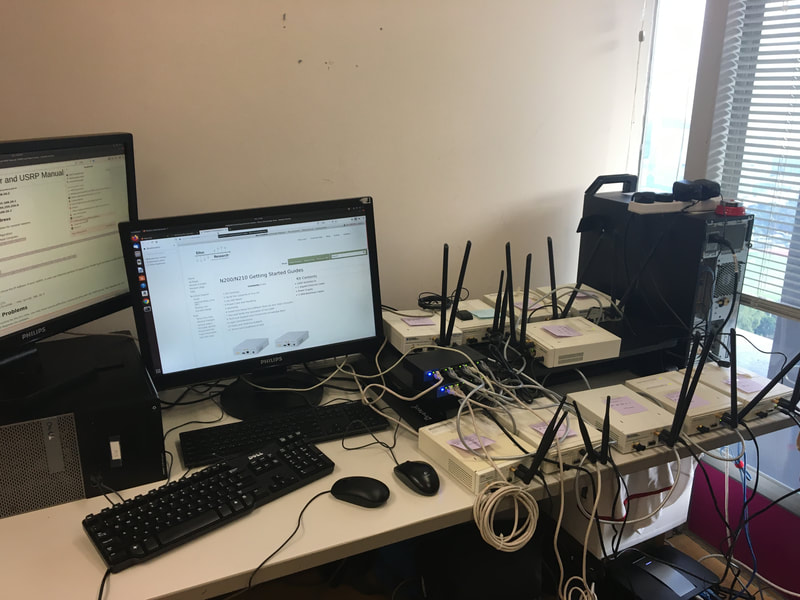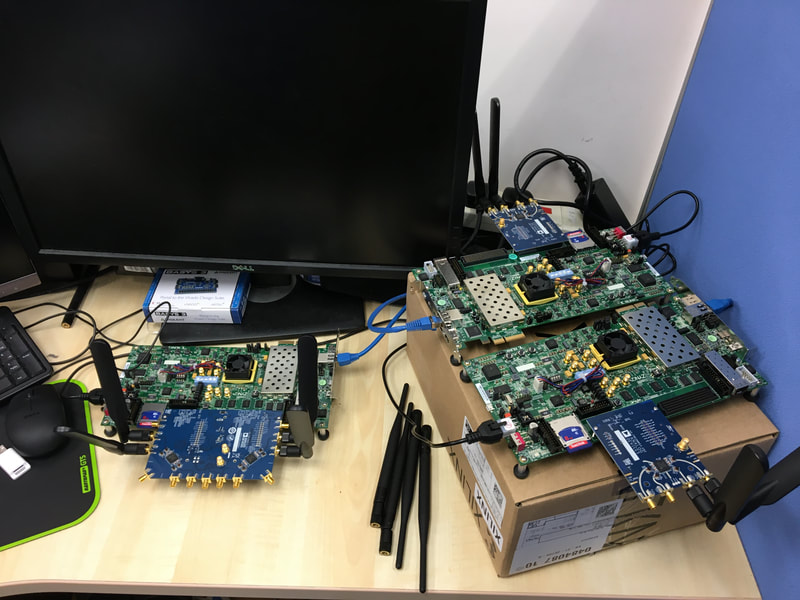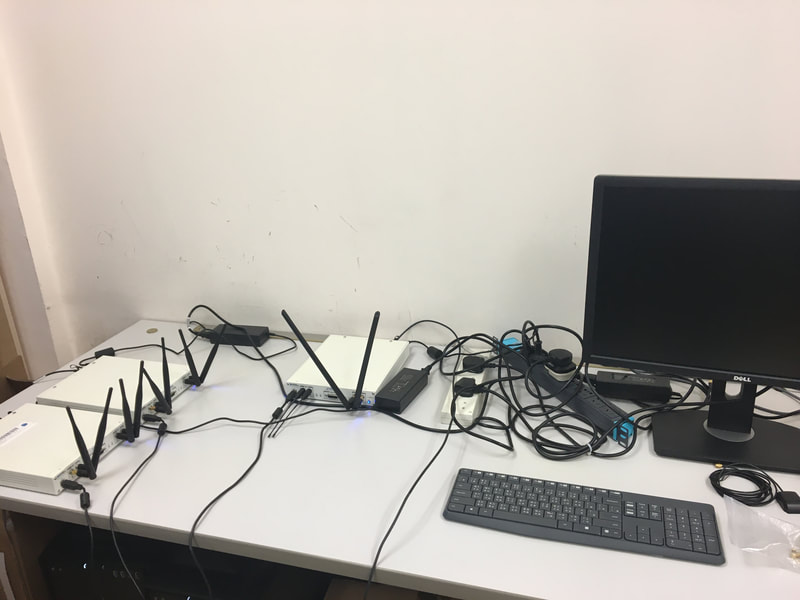Our group work actively in the following three areas:
1. High-performance wireless communication for mission-critical applications
- Our goal is to significantly enhance the reliability and decrease the latency of commodity wireless systems using advanced parallel networking and task-aware packet filtering algorithms.
- Parallel networking enables a wireless device to schedule packets intelligently with adaptive redundancy across multiple wireless interfaces (e.g., 5G and WiFi) to optimize the latency and reliability performance.
- Not all data generated at the application layers is equally valuable. To ensure optimal transmission, we develop task-aware packet filtering algorithms that selectively transmit data with high importance to the underlying applications, characterized by various metrics such as age of information and value of information. By implementing these algorithms, we can prioritize the transmission of critical data and reduce network congestion caused by the transmission of less important data.
- Our current focus is on implementing wireless time-sensitive networking (TSN) solutions, which includes WiFi TSN and 5G TSN. Our approach differs depending on the system; for WiFi systems, we concentrate on developing and implementing advanced networking and time synchronization protocols, extending down to the MAC/driver layers. Conversely, for 5G systems, we prioritize developing and implementing advanced networking protocols at/above the transport layers, using techniques such as customized QUIC.
- We are collaborating with PCCW and ASTRI to develop focused applications, including factory/warehouse automation, teleoperated driving, robot teleoperation, and edge/fog robotics.
2. Intelligent wireless sensing through in-depth signal analysis
- Our goal is to leverage commodity radio signals, such as WiFi/5G/radar signals, to achieve various sensing objectives through in-depth signal analysis. When needed, we also develop model-guided AI/machine learning algorithms.
- One focused application is on intelligent sensing for mobile robots, including radio-based simultaneous localization and mapping (SLAM), channel prediction, and obstructed human perception.
- We are also developing algorithms for realizing physical-layer authentication/identification of wireless devices, which is analogous to human voice recognition. Our approach is based on leveraging the unique radio-frequency circuitry characteristics or artificially induced characteristics of wireless devices as fingerprints, enabling us to distinguish the transmitter of received signals.
- Another focused application is on healthcare, such as vital signal monitoring, activity/fall detection, and sleep quality monitoring.
3. Systems prototyping based on commodity wireless equipment, FPGA or software-defined radio platforms
- Our group advocates experimental wireless research. In addition to rigorous mathematical modeling and extensive computer simulations, we also implement our developed algorithms on commodity wireless equipment, FPGA or software-defined radio (SDR) platforms to evaluate their performance in real-world environments.
- We deeply believe that experimental research is essential for validating theoretical models and ensuring that wireless systems and algorithms perform optimally in real-world scenarios. By conducting experiments, we can gain practical insights into the behavior of wireless systems, identify potential issues, and fine-tune our algorithms to achieve optimal performance.
- Our group has latest WiFi/5G equipment, the NI USRP X310, B210, and N210, as well as Xilinx SoC ZC706/ZCU102 Evaluation Kits. We also have several robotic platforms that allow us to conduct experiments in a variety of real-world settings.
Research/Teaching Grants
We consider ourselves fortunate to be supported by the following grants:
- PI, "Intelligent Mobile Robot-Augmented Self-Supervised Wi-Fi Sensing", The Chinese University of Hong Kong Shun Hing Institute of Advanced Engineering research grant, HK$ 796,000, 2022-2024.
- PI, "Information Freshness-Oriented Random Access: From Theory to Practical Implementation", Hong Kong Innovation and Technology Fund (ITF) + Research Talent Hub Scheme, ~HK$ 3 millions, 2021-2023.
- PI, "Development & Evaluation of a Mesh WiFi-based In-Home Health Monitoring System for Older Adults", Worldwide Universities Network – Research Development Fund plus CUHK matching, UK£20,000 (~HK$209,000), 2021-2022.
- PI, "Development of A Simulink-based Software-Defined Experimental Platform for A Series of Communication Courses in Information Engineering Program", Teaching Grant, The Chinese University of Hong Kong, HK$197,850, 2020-21.
- Sole PI, Departmental matching grant for RGC General Research Fund, The Chinese University of Hong Kong, HK$200,000, 2020-2022,
- Sole PI, "Enabling Ultrareliable Low-latency Wireless Communications for Industrial IoT: A Noncoherent Multiuser Massive MIMO Framework", Hong Kong Research Grants Council (RGC) General Research Fund, HK$845,055, 2021-2023.
- PI, "Close-to-Product Prototype Development and Trial Run of a High-Performance Industrial Wi-Fi System", Technology and Business Development Fund, The Chinese University of Hong Kong, HK$173,301, 2020-2021
- Sole PI, "An "Online" Experiment Platform for IERG4100 and IEMS5701", Teaching Grant, The Chinese University of Hong Kong, HK$99,630, 2020.
- Sole PI, "Design and Optimization of Information Freshness-Oriented Distributed Multiple Access for Large-Scale IoT Networks", Direct Grant, The Chinese University of Hong Kong, HK$150,000, 2020-2022.
Research Collaborators
- Prof Soung Chang Liew, The Chinese University of Hong Kong, IEEE Fellow
- Prof Petar Popovski, Aalborg University, IEEE Fellow
- Prof Jack Lee, The Chinese University of Hong Kong
- Dr. Zhibo Pang, Senior Principle Scientist, ABB Corporate Research, Sweden
- Dr Zheng Dong, Research Professor, Shandong University, China
This page was last modified May 2023 by [He Chen] and polished by ChatGPT.





